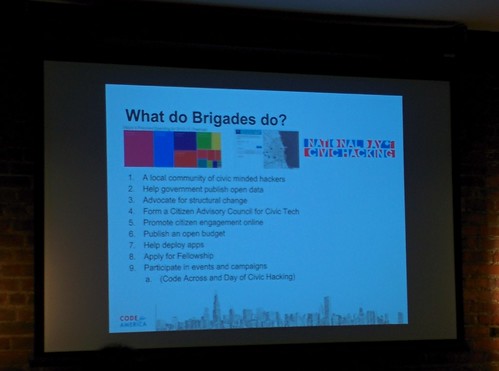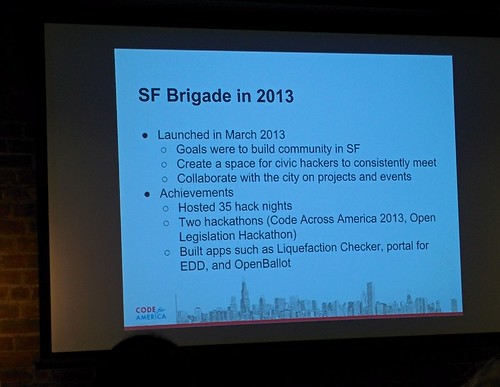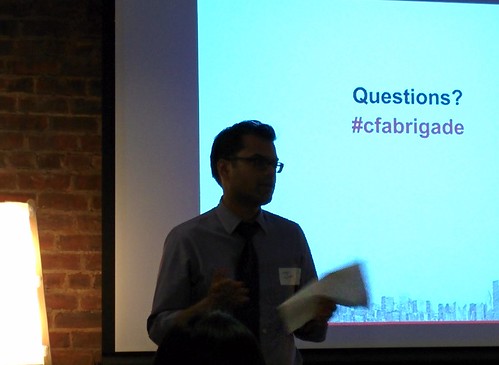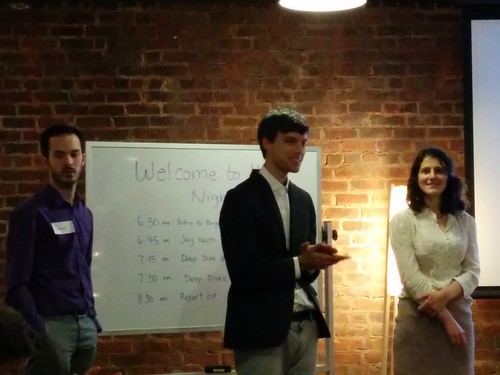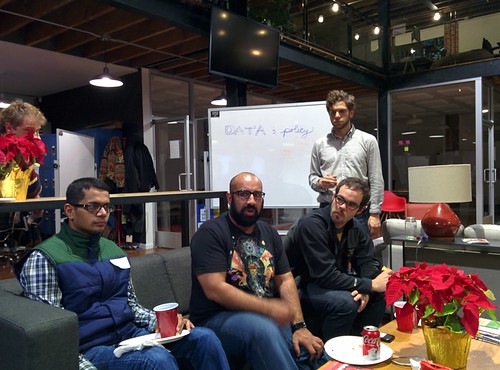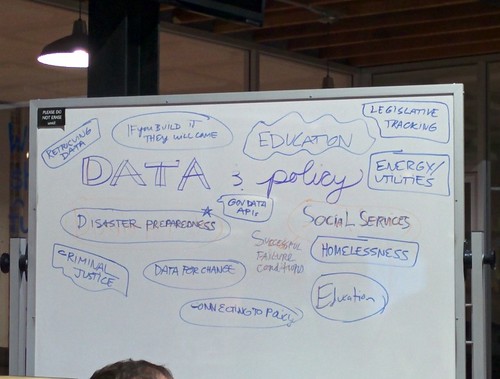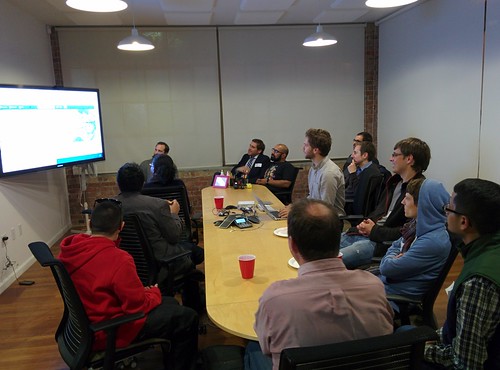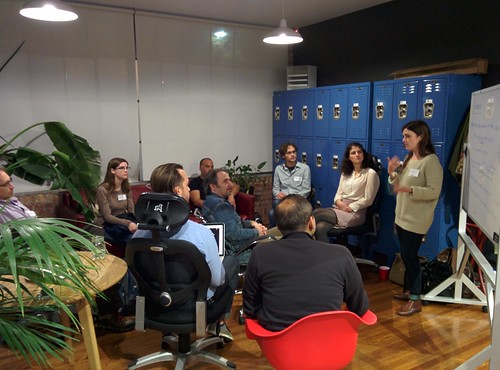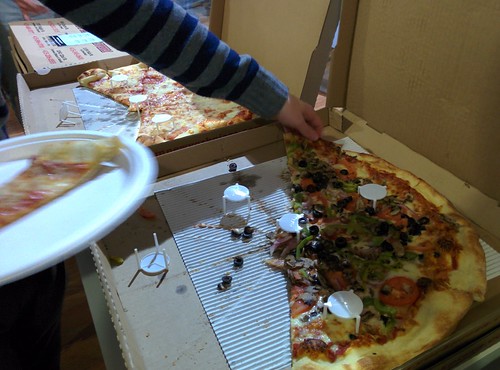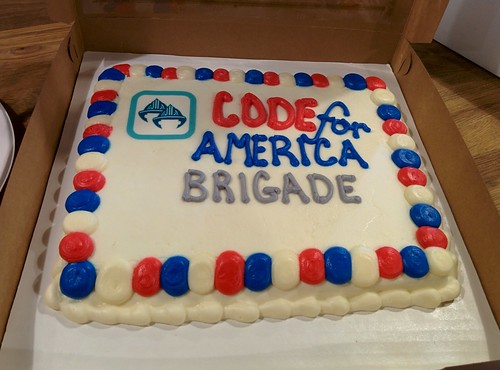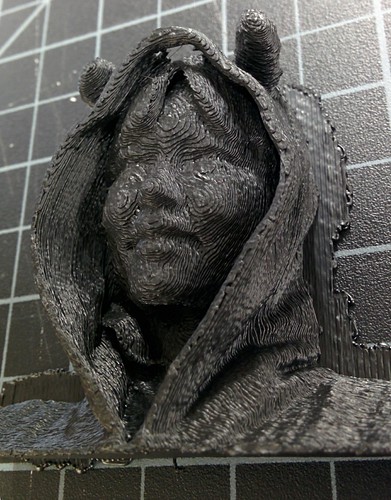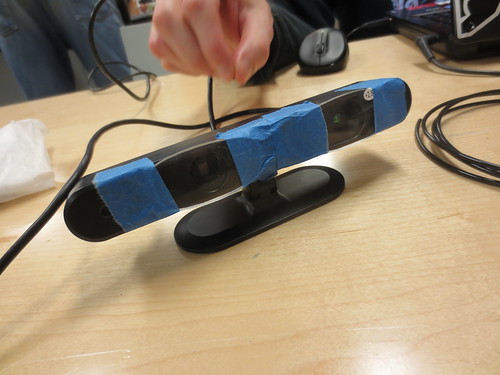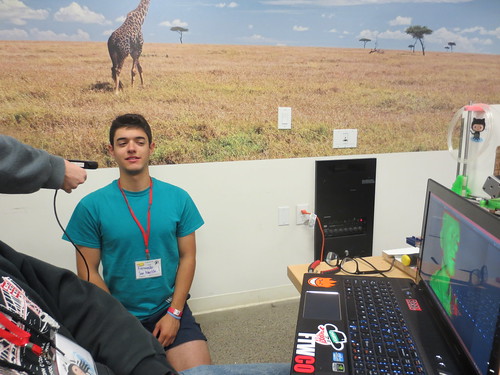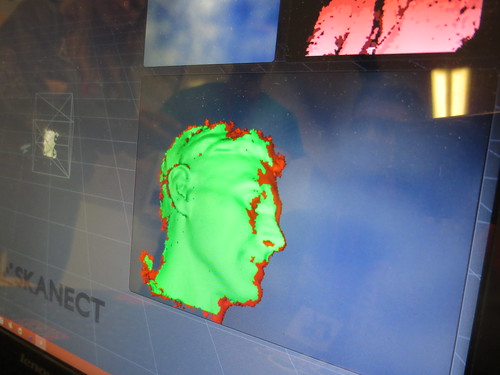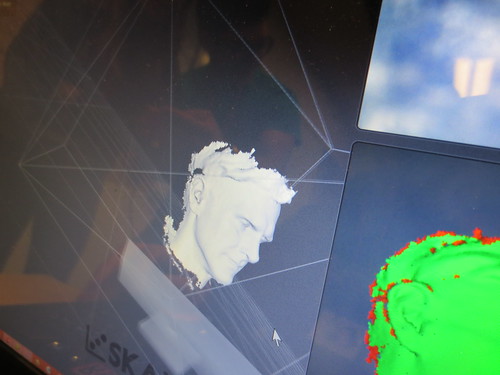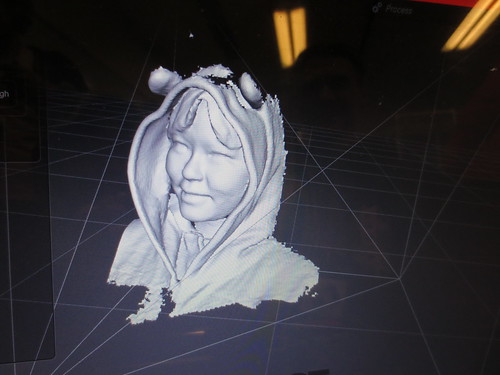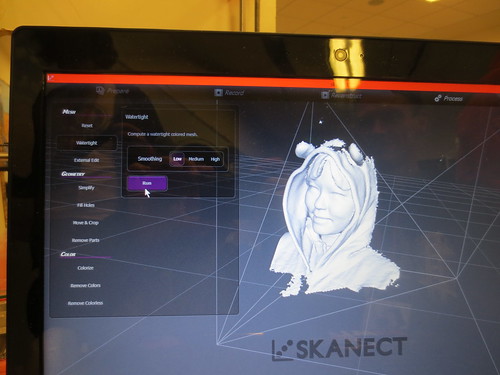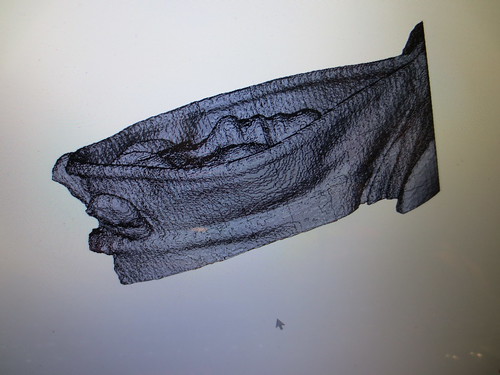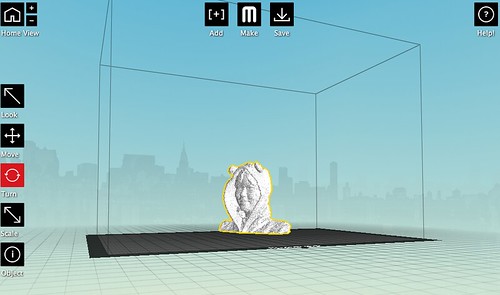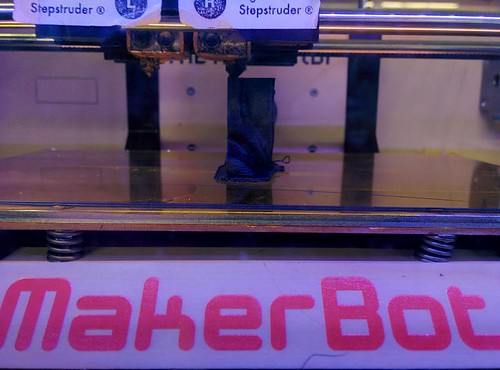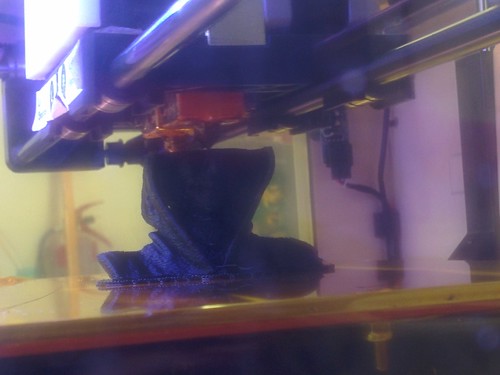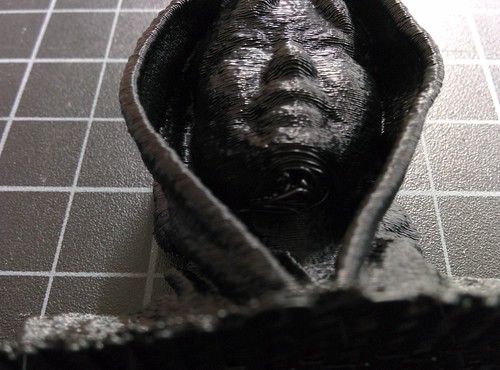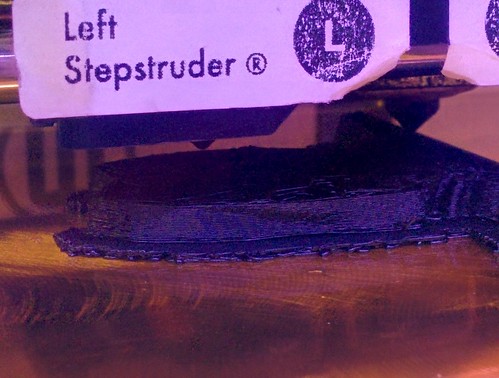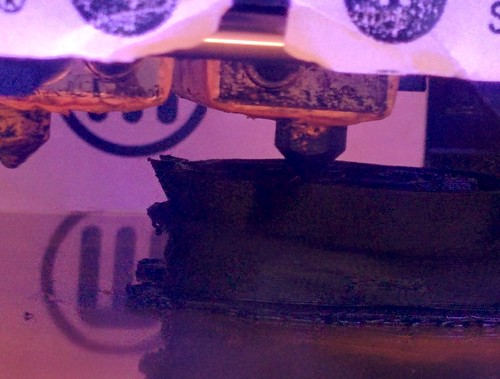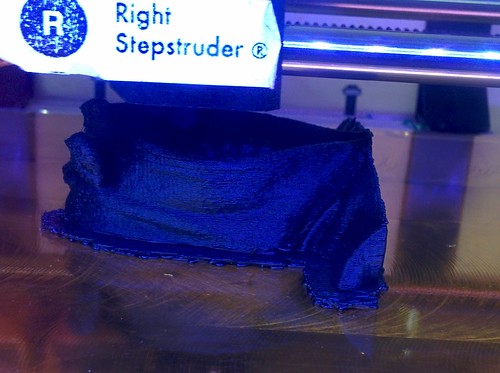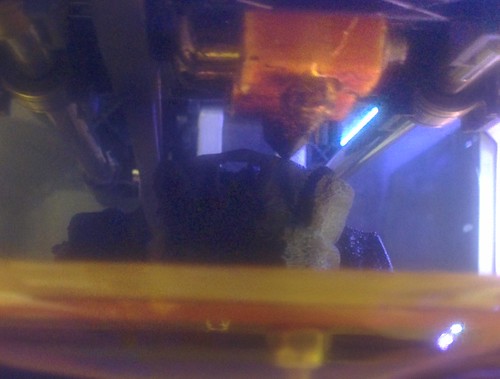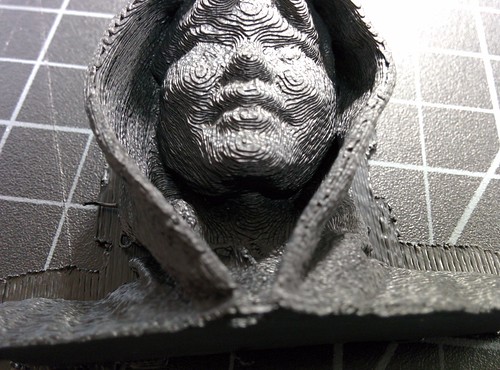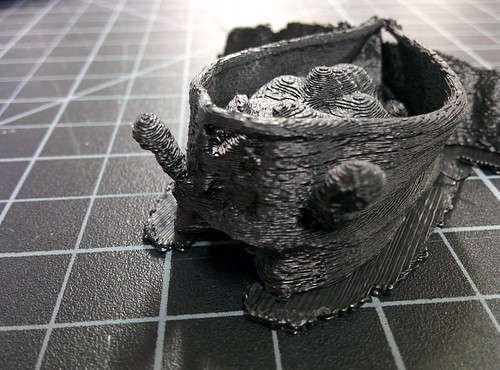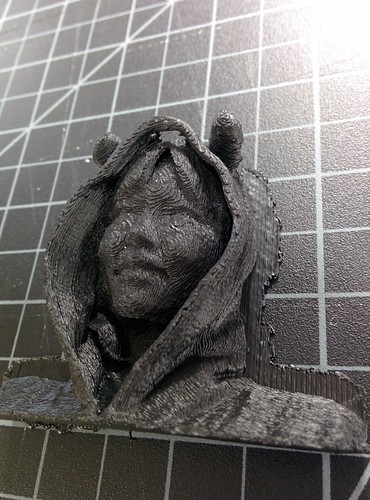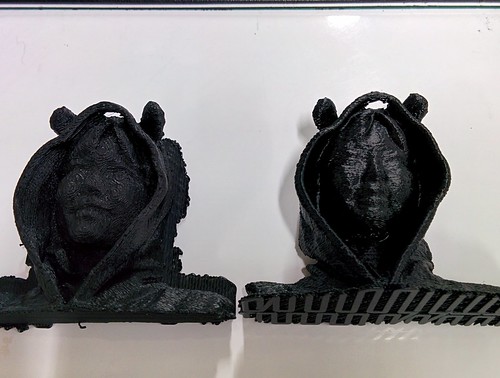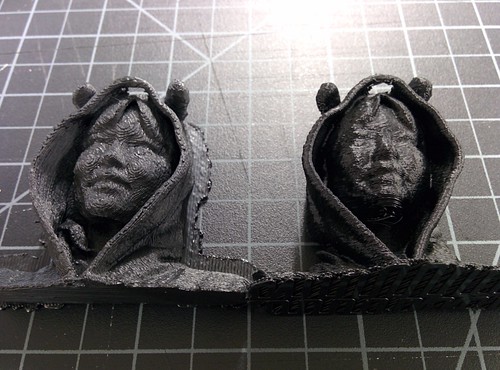I joined SFHTML5 event on "All about WebGL" last week.
If you've missed it, the video archive is here!
Peter Lubbers opening the event.

Talk #1: Introduction to WebGL with Tony Parisi
http://caniuse.com/#search=webgl%20
Tony showed lots of awesome WebGL examples.
100,000 Stars Google Experiment

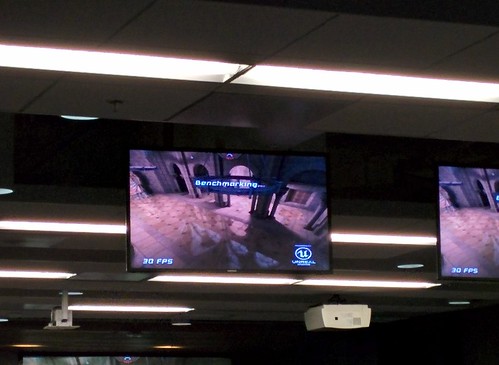

His slides are up here:
Talk #2: Optimizing WebGL Applications with +Don Olmstead
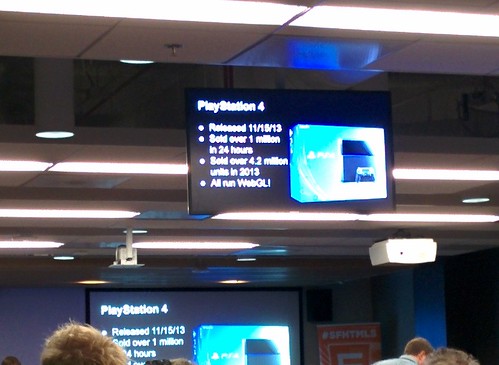
His slides are up here:
Talk #3: WebGL and real-time web communication with Victor Sand
You can sign up for Goo Engine here> http://www.gootechnologies.com/products/engine/
Slides
Talk #4: Finding (and Making) your Happy Place with Isaac Cohen
Inspiring talk!
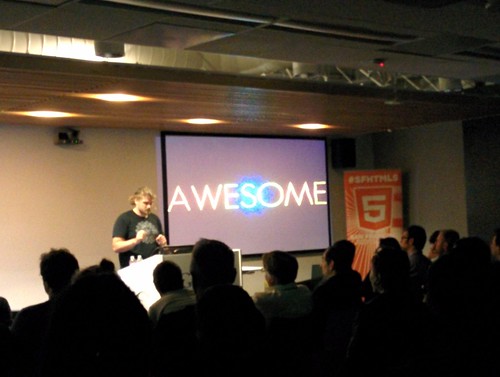
Isaac's slides
Isaac's talk
The room was packed- actually they had 500 people in the waiting list so opened the cafe to accommodate more people!
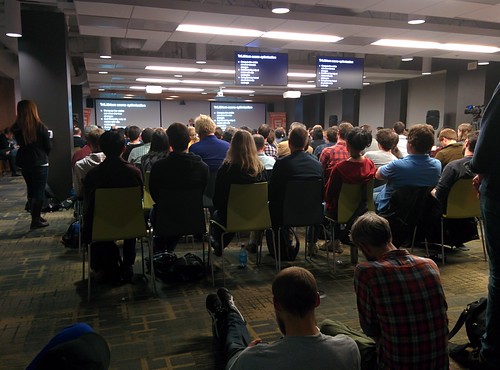
Great view

Lots of food and wine
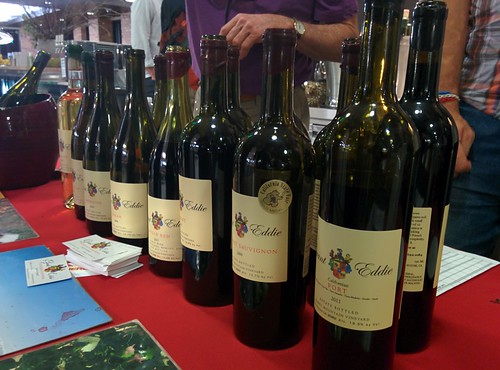
Thanks to Peter, Vanessa and all the staffs that made this event happen!
Disclaimer: The opinions expressed here are my own, and do not reflect those of my employer. -Fumi Yamazaki
If you've missed it, the video archive is here!
Peter Lubbers opening the event.

Talk #1: Introduction to WebGL with Tony Parisi
What started as a brave experiment four years ago is now a full-fledged part of the HTML5 application platform. WebGL provides real-time, hardware-accelerated 3D graphics to anyone with a browser. To create these experiences, all you need is a text editor and a little imagination. WebGL is being used worldwide to create games, virtual environments, page graphics and data visualization, and it now runs on all desktop browsers and nearly all mobile devices. Tony will give a brief, somewhat technical introduction to WebGL, provide a quick survey of what’s hot and what’s hype, and share his thoughts about where this exciting new technology is headed.WebGL support by browsers as of 2014/1/26:
http://caniuse.com/#search=webgl%20
100,000 Stars Google Experiment



His slides are up here:
Talk #2: Optimizing WebGL Applications with +Don Olmstead
WebGL allows developers to create fully 3D worlds within the context of the browser. However the API itself is very low level, and if used improperly can cause a performance bottleneck within the application. To effectively use the API its necessary to understand both how WebGL works and how an application uses the interface. To illustrate this the optimization of the PlayStation 4 UX, the largest site built completely on top of WebGL, will be discussed.Did you know that PlayStation 4 UX was built on WebGL? That is totally awesome!

His slides are up here:
Talk #3: WebGL and real-time web communication with Victor Sand
You can sign up for Goo Engine here> http://www.gootechnologies.com/products/engine/
As we have seen, WebGL is a very powerful tool for enriching the Web with graphics, but how do we get it into the hands of the creators? How do we provide the myriad Web developers with powerful and sharpened mechanisms that take away the hassle of specialized and redundant ground work? Victor will highlight some aspects in building years of experience into a smooth pipeline, providing coders and artists alike with a sturdy and powerful web graphics tool. Then, Victorwill demonstrate how WebGL experiences created with Goo Engine can be elevated to the next level by making them even more immersive and engaging. They will show how you can use any smartphone connected to the public Internet to remotely control WebGL applications and games. Last, Victor will demonstrate how this communication pattern can be applied to control Web connected physical objects from continents away.
Slides
Talk #4: Finding (and Making) your Happy Place with Isaac Cohen
Inspiring talk!
We as coders are by definition creators, our tools are html5 and our canvas the internet itself. Because of the power of the tools we possess, we are able to ask emotional questions through code. By spending time creating exactly what we want to create, we not only manifest a space that we can go to as an escape, but additionally provide an free oasis for the rest of humanity to explore. In this talk we will look at a few of these digital playgrounds, and additionally actualize a project of our own using WebRTC , the Web Audio API , and Three.js

Isaac's slides
Isaac's talk
The room was packed- actually they had 500 people in the waiting list so opened the cafe to accommodate more people!

Great view

Lots of food and wine

Thanks to Peter, Vanessa and all the staffs that made this event happen!
Disclaimer: The opinions expressed here are my own, and do not reflect those of my employer. -Fumi Yamazaki


